
Printing direct onto objects such as exhibition give-aways means print quality has to be scratch-resistant. Mimaki’s new inks and desktop LED UV flatbed printers offer a highly versatile capability
Promotional products have long been a popular form of advertising or added value for businesses, whether as exhibition or event giveaways, corporate gifts or to sell on to members of the public to enhance brand loyalty and lifestyle aspirations. For example, ‘You have bought the car, now buy the umbrella, scarf, t-shirt, fleece, shopping bag, key fob, stick pin’; even dog bowls do not escape the marketing opportunity.
So how can sign-makers and print-service-providers (PSPs) expand their offering by moving into promotional products printing?
Dalesway Print Technology managing director, Andrew Stocking, confirms that promotional products remain one of the soundest ways of growing an existing business. “The benefits of useful products carrying advertising messages are clear: the end-user uses the item and it is around for a long time acting as a silent salesman,” he says.
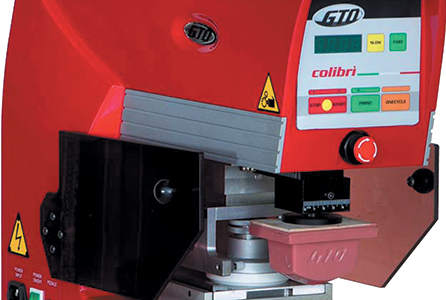
The Colibri Evo one colour pad printer from Dalesway Printing Technology is known for speed of production
Rob Goleniowski, head of sales at Roland DG concurs: “This revenue-generating sector is the perfect place to diversify, especially considering the increasing popularity of personalised products and the opportunity to exploit resources already available. Sign-makers and PSPs looking to expand their business could utilise existing skills and machinery by supplying promotional products as part of their offering.”
Getting on board
Having decided to get a foot in the door, unless existing customer demand is leading direction, the choice has to be made as to what products to start with.
“The scope for dye-sublimated promotional products is huge and perhaps the most obvious items are mugs and other ceramics, table top items, key fobs, phone cases, and cushions, but this is just scratching the surface,” observes Phil McMullin, sales manager at Epson UK.
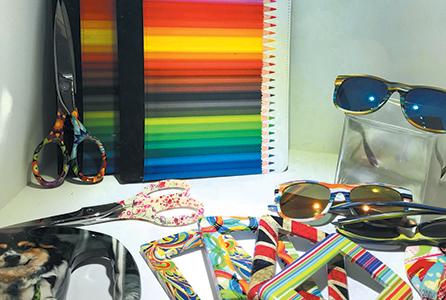
A small selection of the wide range of dye-sublimated products that can be produced. Epson UK sales manager, Phil McMullin, says the restraints are only limited by your imagination
He continues: “You only have to take a look at the blanks on the website of one of our resellers, Xpres, to see that they talk about pennants, place mats, cutting boards, bar runners, wall plaques, water bottles, clocks, and door signs among other things.
“Going forward, the restraints are only limited by your imagination. You might start with a limited portfolio of bestsellers and extend the range of blanks. Or you might enhance your design capabilities, based on feedback from customers or from creatives who have ideas that are sellable. Epson can offer various sizes of dye-sublimation equipment so it is easy to expand the volume or formats too.”
SSE Worldwide supplies a wide range of digital printing equipment that can print on a variety of products and surfaces including golf balls, metal tins, polypropylene boxes, wooden signs, and acrylic signs.
“When entering the promotional product sector, you need to start by focusing on easy-to-print, quirky products,” recommends managing director, Scott Armitage, continuing: “It’s not so much about how you print but what you print—graphics and/or text—to make the product different from the rest.

It’s not so much about how you print but what you print—graphics and/or text—to make the product different from the rest”
“With UV technology, the sign-maker can produce unique designs with raised and brightly coloured effects on a wide variety of substrates including glass, acrylic, and wood. The business opportunities are endless and only limited by the imagination of the designer. Consumers today are looking for unique and different products.”
Gearing up
Then, of course, there is the matter of ensuring you have the right equipment. Stocking from Dalesway Print Technology advises: “If you want to move your business forward by entering this lucrative market, you will need to make a few decisions on exactly what you want to do. Important questions to consider are, ‘how much space can you dedicate to the new venture?’ and ‘what is your budget?’ This should include a budget for equipment, supplies, staff training, and marketing.
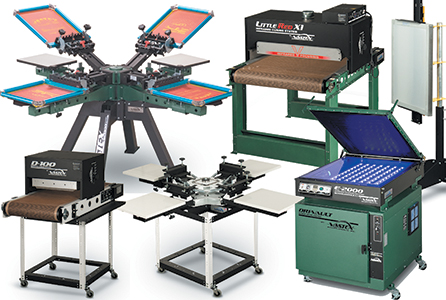
Dalesway Print Technology supplies a range of EU manufactured pad printing machines that covers many applications
“The least space-hungry process from an equipment standpoint has to be pad printing. Pad printing is a highly versatile process that will allow printing onto a vast array of promotional goods such as pens, clocks, calculators, USB drives, and many more. Naturally, if the print area gets bigger, so does the machine, but a single colour pad printer for smaller items would sit neatly on a bench taking about the same amount of space as the average laser printer.
“There is a vast market of cheap imports from the Far East, but if you are running a serious business, a good bit of kit with a decent warranty will pay you back fast and serve you for many years to come, so why compromise on quality?”
Dalesway Print Technology supplies a range of EU manufactured pad printing machines that cover a wide range of applications, including some with industry leading large-format print areas and five-year warranties. In addition, the Vastex range of screen printing machinery offers newcomers a choice of entry point to the promotional product print market, with something to suit most budgets. On the other hand, if space is less of a problem, Stocking recommends considering screen printing as a means of diversification, for printing items such as t-shirts.
Once again he gives a word of warning: “Don’t be fooled into buying second hand stuff online that seems like a bargain. In most cases, cheap machinery ends up being resold online time and time again as mistakes are passed from one person to the next. If you are serious about screen printing, you need a press that can hold registration.
Contrary to the claims out there, all presses do not hold accurate registration. You also need a decent screen exposure unit—not an outdoor light on a stand—a flash cure unit, and a tunnel dryer.
“Each item of equipment makes up a part of creating a successful business. If you do not have sufficient budget to invest in good quality kit, it really is better to wait or consider leasing which is a very tax effective way for businesses to obtain new equipment.”
Goleniowski from Roland DG believes the key to success lies in choosing a machine that offers full flexibility to ensure that a range of services can be offered.
“An ideal printer to start customising and creating unique graphics products is Roland DG UK’s Versa UV LEF range,” he suggests, adding: “This UV, direct-print range is easy to use and produces excellent quality results.
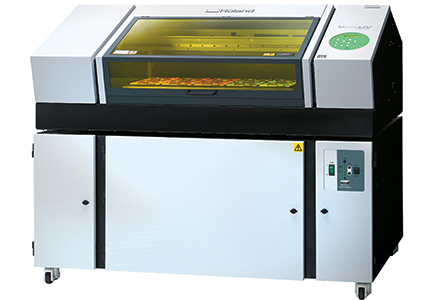
The Roland DG Versa UV LEF direct-to-print range is easy to use and offers an ideal option to start customising and creating unique graphics products
“Creating designs on multiple items should be an important part of the offering and for this, a jig is an essential tool. You can make a jig on a router, laser, milling machine, or even by printing layers of gloss to act as a guide to position items, so that printing is accurate.
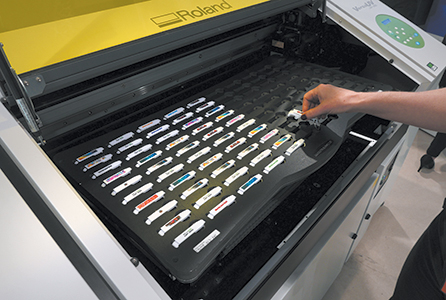
The Roland Versa UV LEF used with a jig, essential for creating designs on multiple items
“Once established you can expand your kit with the addition of print and cut machines, such as the Versa Studio BN-20 desktop printer/cutter and heat press, enabling you to tackle different jobs simultaneously. Both the Versa UV LEF range and BN-20 are capable of economic, smaller quantity print runs, and both produce a high-quality end-product.”
As a start, Armitage from SSE Worldwide recommends looking at affordable UV LED inkjet flatbed printers: “A lot of people shy away from the cost of digital flatbed printing but there are cost-effective and affordable options in the smaller format range. By investing in flatbed UV LED, the sign-maker can open up all sorts of entrepreneurial possibilities.

Scott Armitage, managing director at SSE Worldwide, says the key to success lies in the creativity and uniqueness of the end product
“I would say start with a small-format and middle of the range UV LED flatbed printer where you can print both promotional items and small signage such as chalk boards for pubs for example. Then I would invest in a router/cutter and laser marking equipment. Further on you may want to purchase sublimation machines for higher volumes and the cheaper end of the market.”
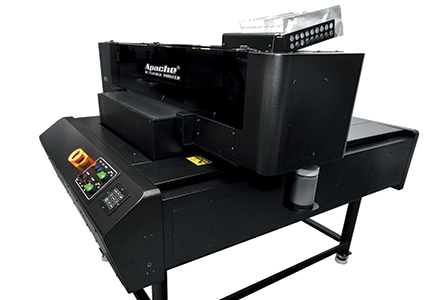
SSE Worldwide recommends starting with a small-format and middle of the range flatbed printer which can produce both promotional
items and small signage items
Printing direct onto objects such as phone cases and other personalised items such as exhibition giveaways means print quality has to stand up to close inspection and be scratch-resistant, and there are also the cost implications involved in producing short-run batches to be considered.
Hybrid Services’ national sales manager, John de la Roche, elaborates: “Mimaki’s two new desktop LED UV flatbed printers, UJF-3042 MkII and UJF-6042 Mk II, are exceeding industry expectations and provide compatibility with a range of Mimaki’s versatile UV inksets. LUS-120 inks provide stretchability up to 170 percent and are great for printing onto soft material surfaces like smartphone wallet cases which require folding.
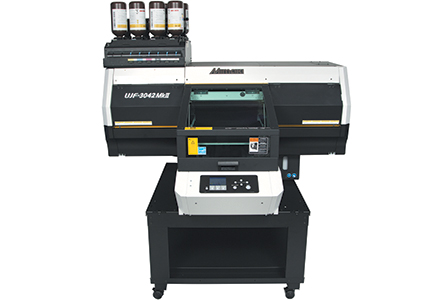
The Mimaki UJF-3042 MkII from Hybrid Services provides compatibility with a range of Mimaki’s versatile UV inksets for printing onto a wide range of materials
“LUS-150 inks are ideal for acrylic items because they give excellent adhesion; and the LH-100 rigid inks withstand high levels of abrasion making them perfect for accessories or stationery products. When used with Mimaki’s PR-200 inkjet primer, LH-100 inks are the perfect match for substrates that have been traditionally difficult for UV-curable inks, such as glass and metal. Finally, a variety of special effects can be achieved with Mimaki Clear Control (MCC) varnish ink, such as embossing or gloss finish.”
Giving a broad brush example of costs to get started, McMullin from Epson remarks: “For around only £5,000 you can be printing with a machine such as the Epson Sure Color SC-F6200 44" dye-sublimation printer, but bear in mind you will need a suitable heat press for finishing your applications. Mug presses start below £500 and there is a vast range of sizes and quality of presses available, but go for a good one to ensure even heat and pressure and therefore consistent high-quality print results. 3D sublimation will require a vacuum oven. By way of further assistance, there is a migration path with Epson as your business expands.”
Charting your course
The easiest and most in-demand promotional products include pens, phone cases, and USB sticks. However, Goleniowski observes that this area of the market is already competitive, so newcomers should research the industry to ensure they offer something different or better than the competition.
“By initially promoting the new area of the business to existing customers, ideas can be generated and market positioning and share established,” recommends Goleniowski, adding: “Companies are always looking for novel items to promote and publicise goods and services, so there really are no limits to what your focus can be.”
McMullin expands the point further: “It is around five times as costly to find a new client as it is to develop an existing one so the first move would be to undertake some market research with your current clients. You need to know what type of promotional products could potentially be of interest.
“If seen as the trustee of their brand—which is how the sign-maker or PSP needs to promote itself—it is easy to expand the services on offer. The business needs to be showing customers that it protects, promotes, and extends their brand. Presenting as the custodian of the brand will build customer dependence and loyalty.”
Gaining headway
Before setting out, it is important to identify what advantages can be gained for sign-makers and PSPs by including promotional product printing as part of their overall offering, and whether there are any identifiable trends in this sector.
Hybrid Services has noticed the combined effects of new printing products and increased creativity starting to drive new product options.
“New inks and primers have opened up a vast selection of objects that can be printed to and the industry is beginning to explore some highly creative avenues in this sector and ‘stretch its legs’ with personalised giftware and marketing collateral. It is a trend that is set to continue,” affirms de la Roche, adding: “Printing direct-to-object opens up a world of personalised and bespoke products, whereby end users can request a specific design or their name to be printed to an item, making it unique to them. The Mimaki UJF MkII is perfect for printing individual items or small batches because it can handle variable data and print highly efficiently on small runs.

Printing direct-to-object opens up a world of personalised and bespoke products, whereby end users can request a specific design or their name to be printed to an item, making it unique to them”
“This isn’t just the case with individuals though. Many businesses, large and small, invest substantial funds into the production of branded marketing collateral. Whoever it’s intended for, adding print to a product adds value and if you can offer something a bit unique, like embossed effects or spot varnish, it will increase profits.”
De la Roche concludes: “It’s easier than you may think to get into higher value printed products and with products like Mimaki’s UJF MkII series there are no start-up costs other than the initial hardware investment, short lead times, and you retain control of the process from start to finish. It’s about being creative with inks and effects, and thinking outside the box in terms of what products can actually be printed onto.”
McMullin highlights the win-win benefits in terms of customer retention: “Offering a broader portfolio to your customers reduces the number of suppliers they have to monitor; it simplifies their purchasing so saves time and money. If you don’t extend your portfolio, others will. It also spreads the risk, so that if signage has a lull there is an alternative income. Expansion is a good preventative medicine.”
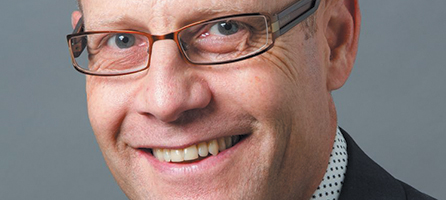
(Above & below) Phil McMullin, sales manager at Epson UK, points out that offering a broader portfolio of services to customers reduces the number of suppliers they need to monitor and simplifies their purchasing—a good way to achieve this is through its dye-sublimation print technology
Armitage elaborates: “There is a recognisable trend, particularly in the UK, for cottage industries in many sectors such as food, beverage, toys, cosmetics, small internal signage, and jewellery, to name a few. These small companies want high-quality promotional items, and quirky containers and packs that enhance and set their product aside from the competition—and they are prepared to pay more for them.
“What they are looking for is inventive design and creative personalisation. As well as online ordering, many of these young companies and young entrepreneurs are using social media channels to sell their goods. It’s an interesting concept and I believe this is where sign-makers could grow their businesses and their reputations.”
Mind the gap
While there are clearly benefits to be gained by diversifying into promotional product printing, in order to avoid potential pitfalls it is important for sign-makers and PSPs to be fully prepared before embarking on the venture.
Stocking advises: “Once you have invested in quality machinery, don’t skimp on training. While there are many useful resources on the internet and many well-meaning people offering to train others, check the credentials of the trainer thoroughly and you will have your new business up and running in no time with the least amount of problems.”

Once you have invested in quality machinery, don’t skimp on training”
Dalesway Print Technology offers training by an industry expert, Douglas Grigar, who travels from the USA to teach a class at their Lancashire base.
“It’s important to have the right equipment, the right people, effective training, and critically the right supplier to partner with for your on-going consumable requirement,” stresses McMullin, adding: “The BPIF offers really good practical courses at different levels and there are also employer bodies in the marketing and promotional products space, not least the Institute of Promotional Marketing, which could also be useful for know-how and networking.”
It has become incredibly easy for end-users to simply order products online from dedicated promotional product companies and even direct from manufacturers in markets such as the Far East. In the face of this, how can sign-makers and PSPs compete with these ‘big boys’?
O Factoid: Jasper Meek, a printer in Coshocton, Ohio, is considered by many to be the originator of the industry when he convinced a local shoe store to supply book bags imprinted with the store name to local schools (Wikipedia). O
Armitage believes there is no point in trying to compete with overseas high-volume producers, particularly imported mass-produced items where thousands of items all look the same: “Your key to success really is in the creativity and the uniqueness of the end product.”
“You don’t know what quality you are getting when you buy off the web,” points out McMullin, continuing: “A PSP should already have the colour management and design facilities in-house so that the move into promotional products is a simple bolt on. You will be offering added value and building on a trusted relationship and by giving good advice and guiding customers you are gaining their confidence. Plus they are buying local which gives obvious timescale/turnaround benefits. It’s really important that service levels remain high and that you emphasise your understanding and appreciation of the customer’s brand, and show respect and sensitivity in how it is used and reproduced.”
He further advocates the opportunities for sign-makers and PSPs to create a USP by offering small quantity, high-quality orders to their end-users.
McMullin enthuses: “That is the beauty of digital. There is no plate-making or set up cost, so a run of one or single product output is viable and cost-effective. Of course, you need to make sure you are not out of pocket on your design costs but again if you are selling to an existing customer you have probably already done this creative work for other applications.”
Promotional product printing is clearly an area of diversification that can bring many benefits to a sign-making or PSP business. Provided that all the background ‘leg-work’ has been done and thorough research and identification of potential products and target markets has been carried out, rich rewards are there for the picking.
Your text here...